In the mid-afternoon of our day of arrival at the tented Camp Savuti (in the Savute reserve to the east of the Okavango Delta in Botswana), we were taken for our first game drive by our guide, P-man. He’s universally known that way, apparently because his proper first name is difficult to pronounce: anyway, we found him a fine guide, and this was proven on our first major game encounter.
After the first couple of hours brought some attractive sightings of lion, wildebeest, lilac-breasted roller, bustard, roan antelope, giraffe and elephant, P-man was alerted by radio to a leopard kill, so we set off south west. We passed through part of the dried-up Savuti River channel where we saw a purposeful looking hyena, who P-man thought had smelt the kill and was heading to investigate, and a herd of nervous impala in lovely evening light.
Hungry hyena
Impala portrait
Evening impala
Impala behind grasses
We came across the kill close to the San rock art site in the Gubatsa Hills: the female leopard had crushed the neck of one of the impalas and the carcass lay at the foot of a shrubby tree. Close by in a light thicket lay the cat, panting with the effort of the kill and gathering her strength.
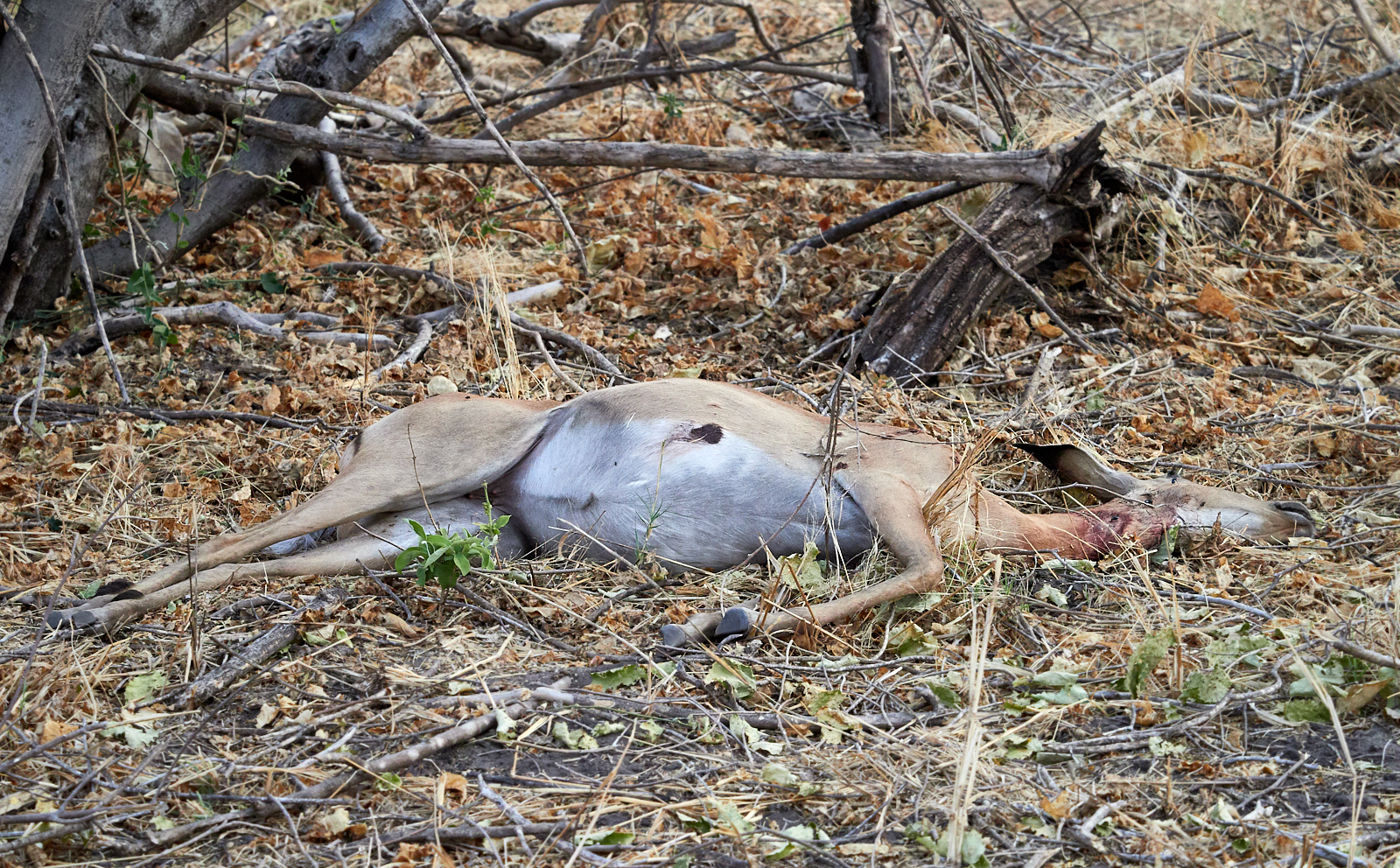
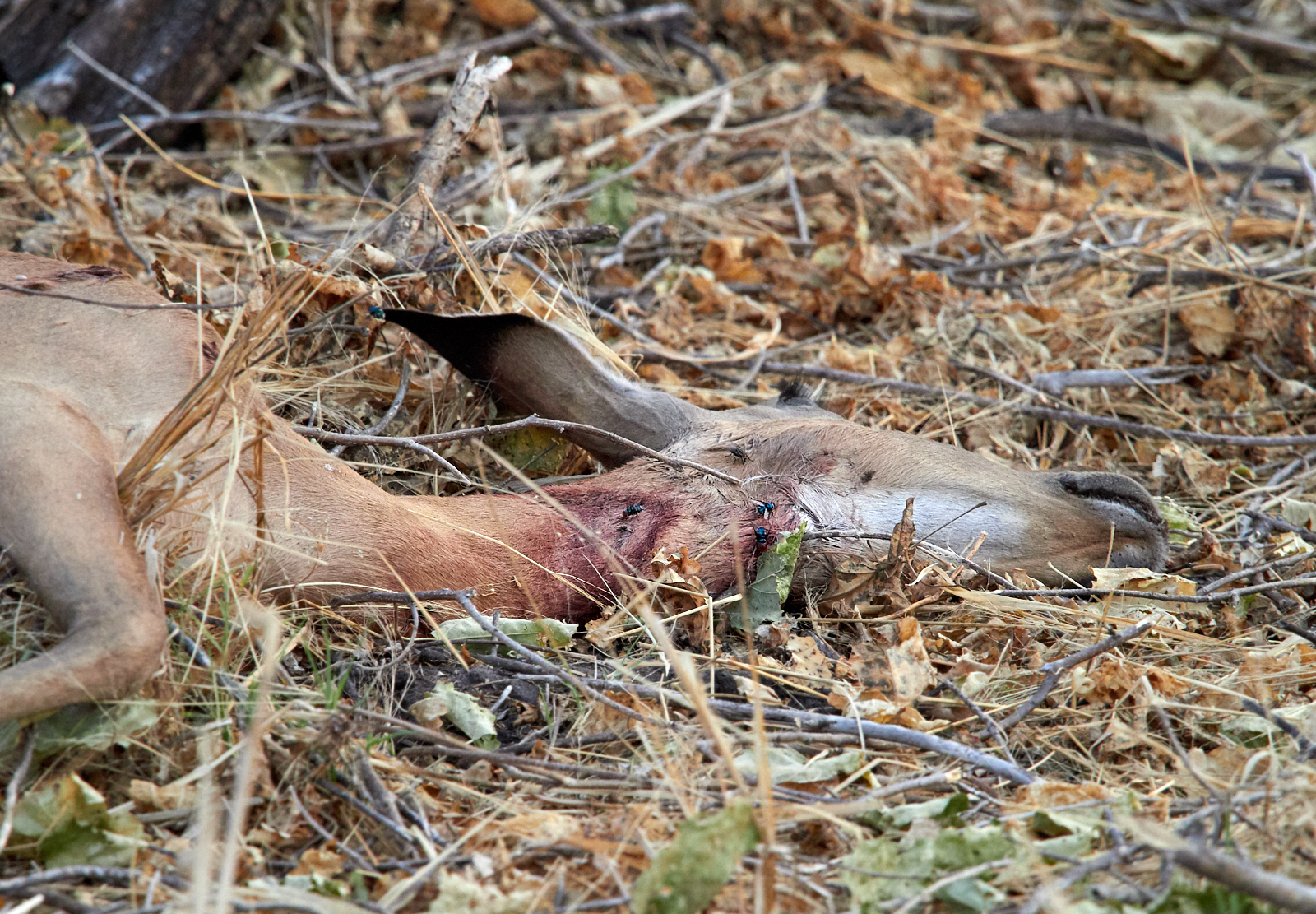
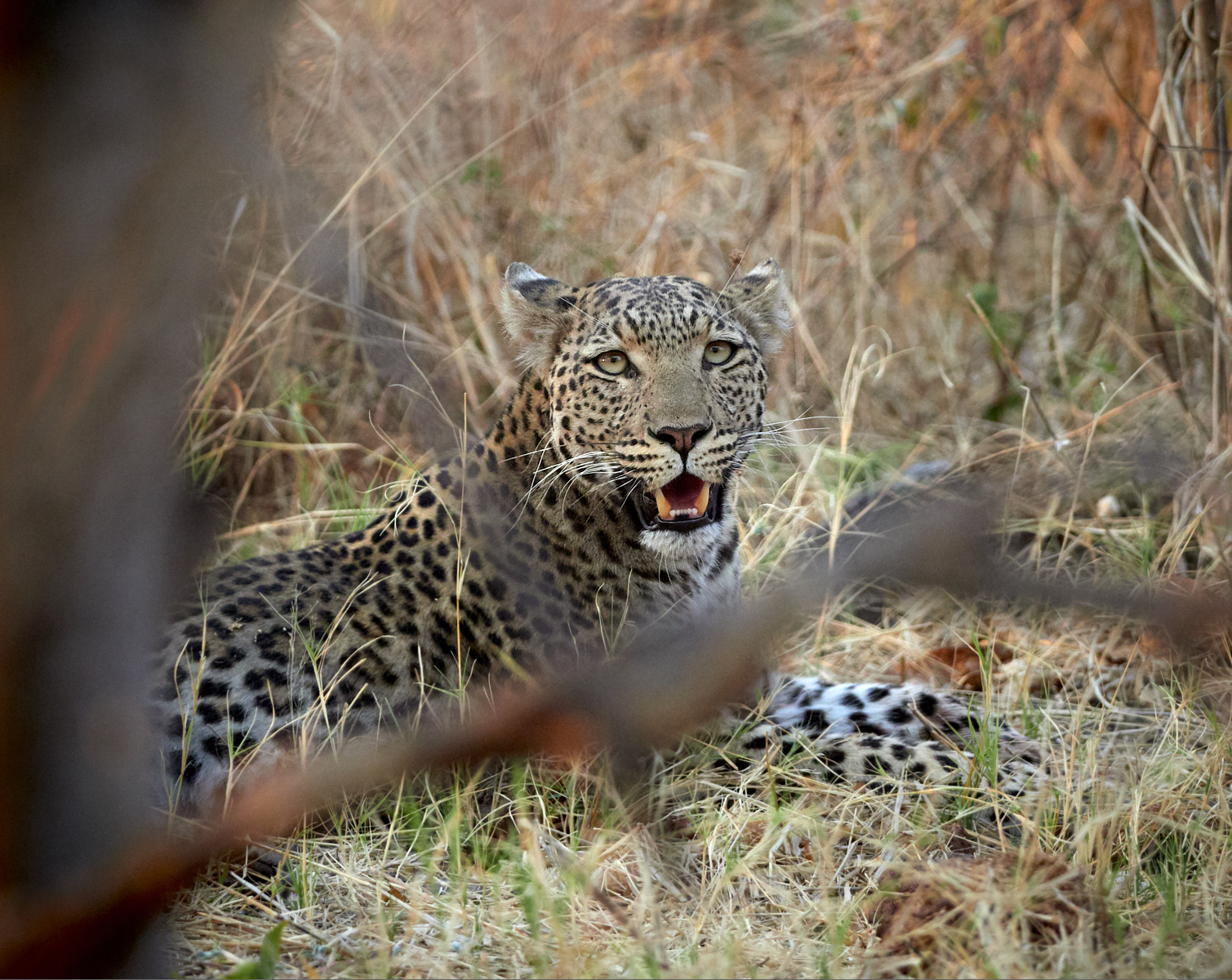
P-man took in the scene, then told us he would move the vehicle next to the impala’s body since he predicted the leopard would soon recuperate sufficiently to make a start on devouring the kill, and then shift the body in to a nearby tree to keep it safe overnight from predators such as hyena.
He did this, and we waited…
…and waited…
…and then exactly what he predicted happened, and we were in the perfect position to watch the leopardess open the carcass. It is moments like this that make African game drives such a special and unique experience.
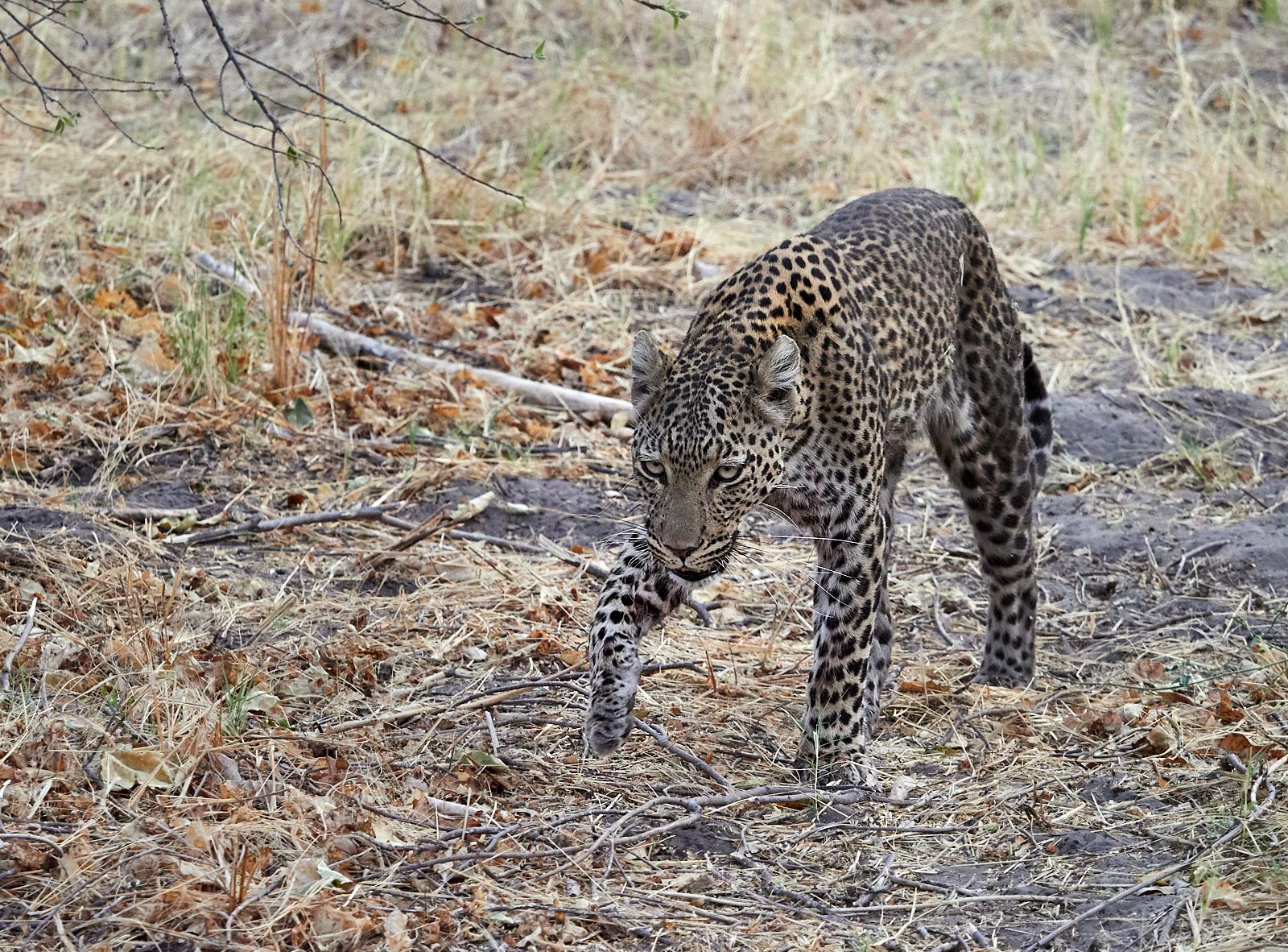

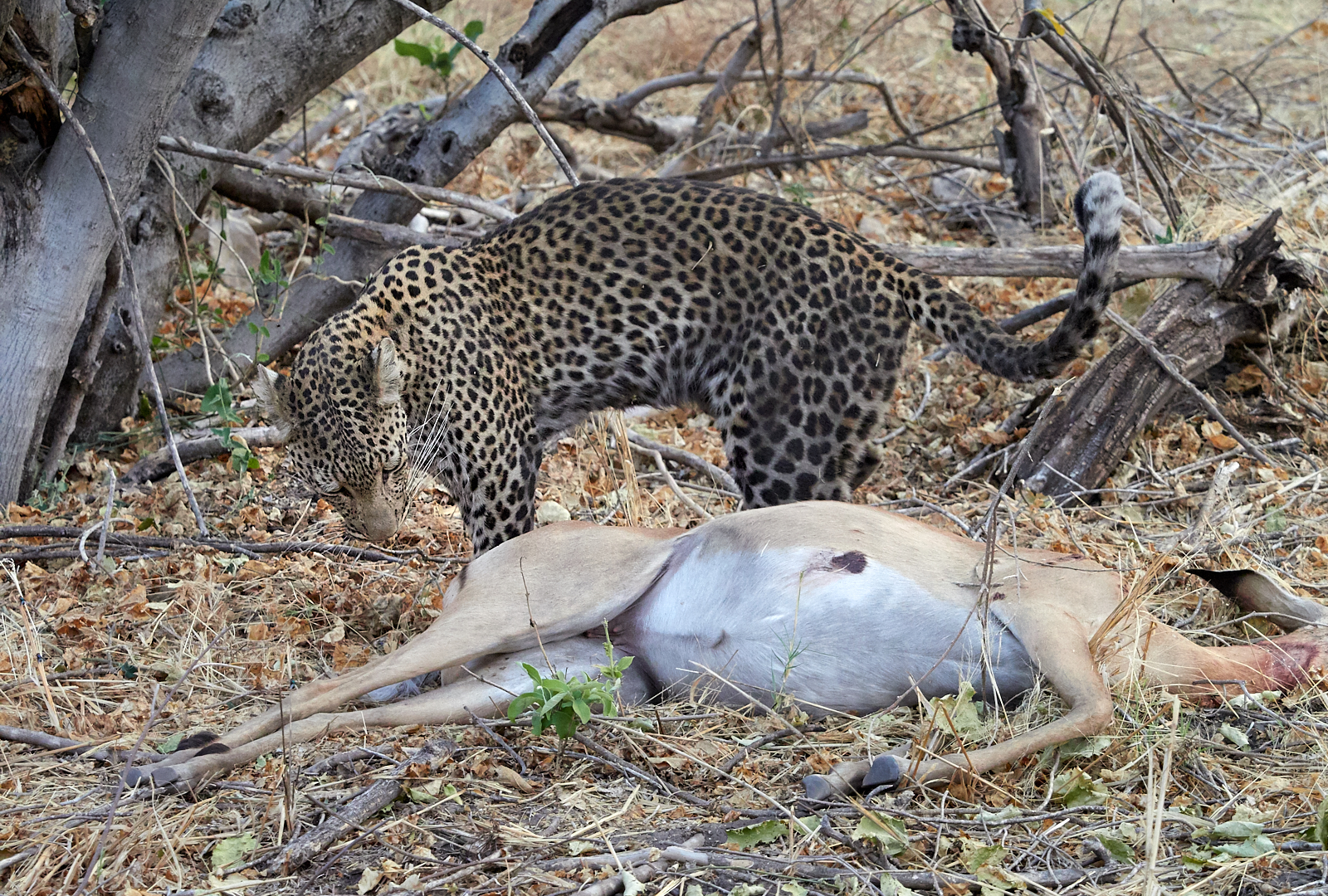
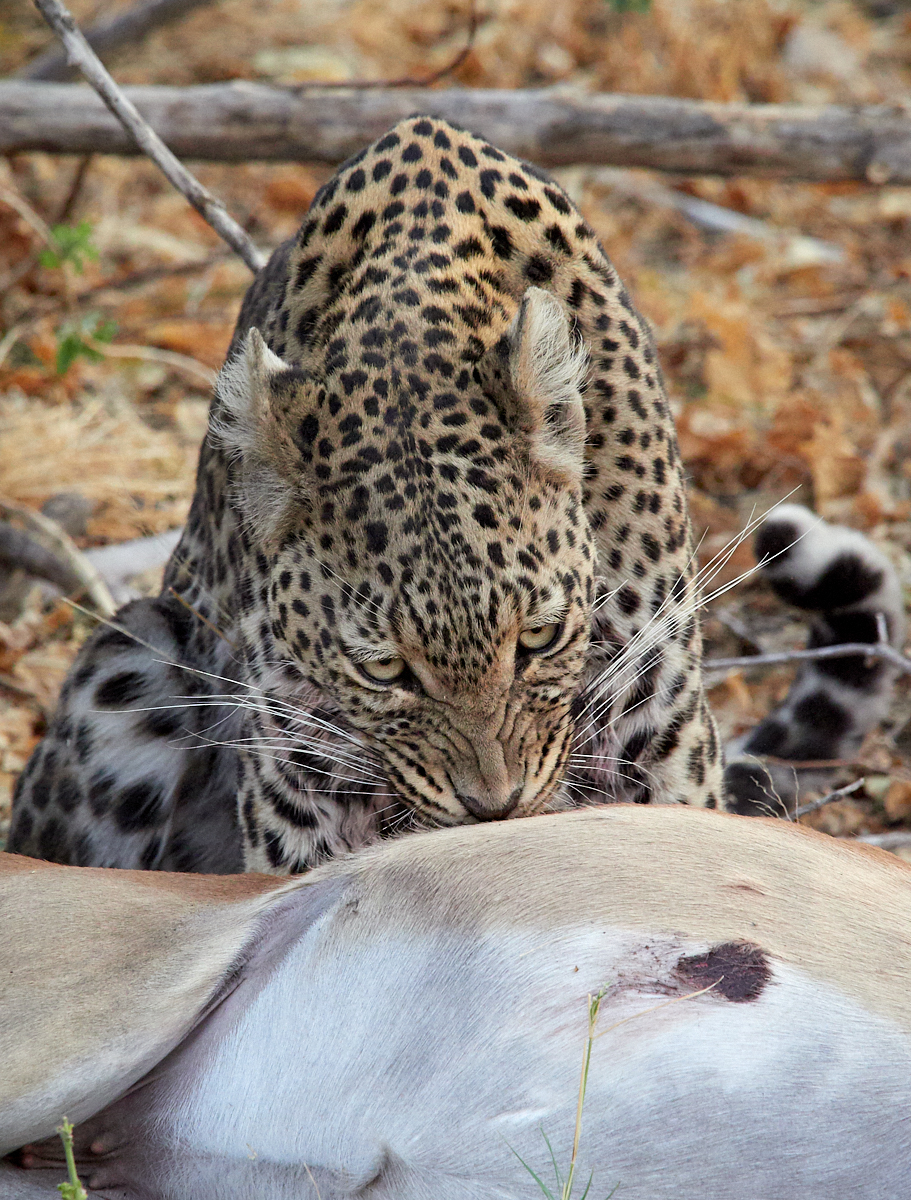
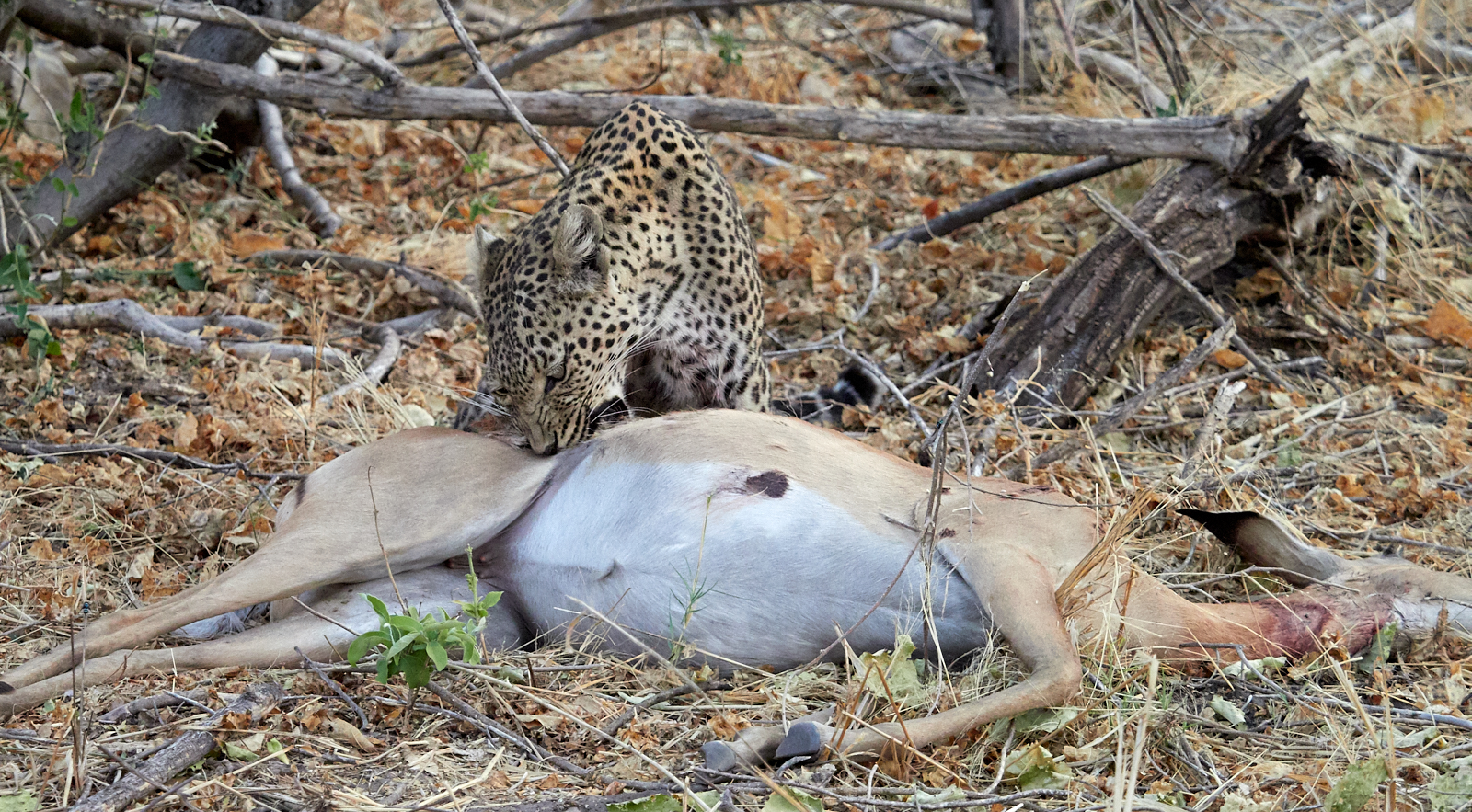
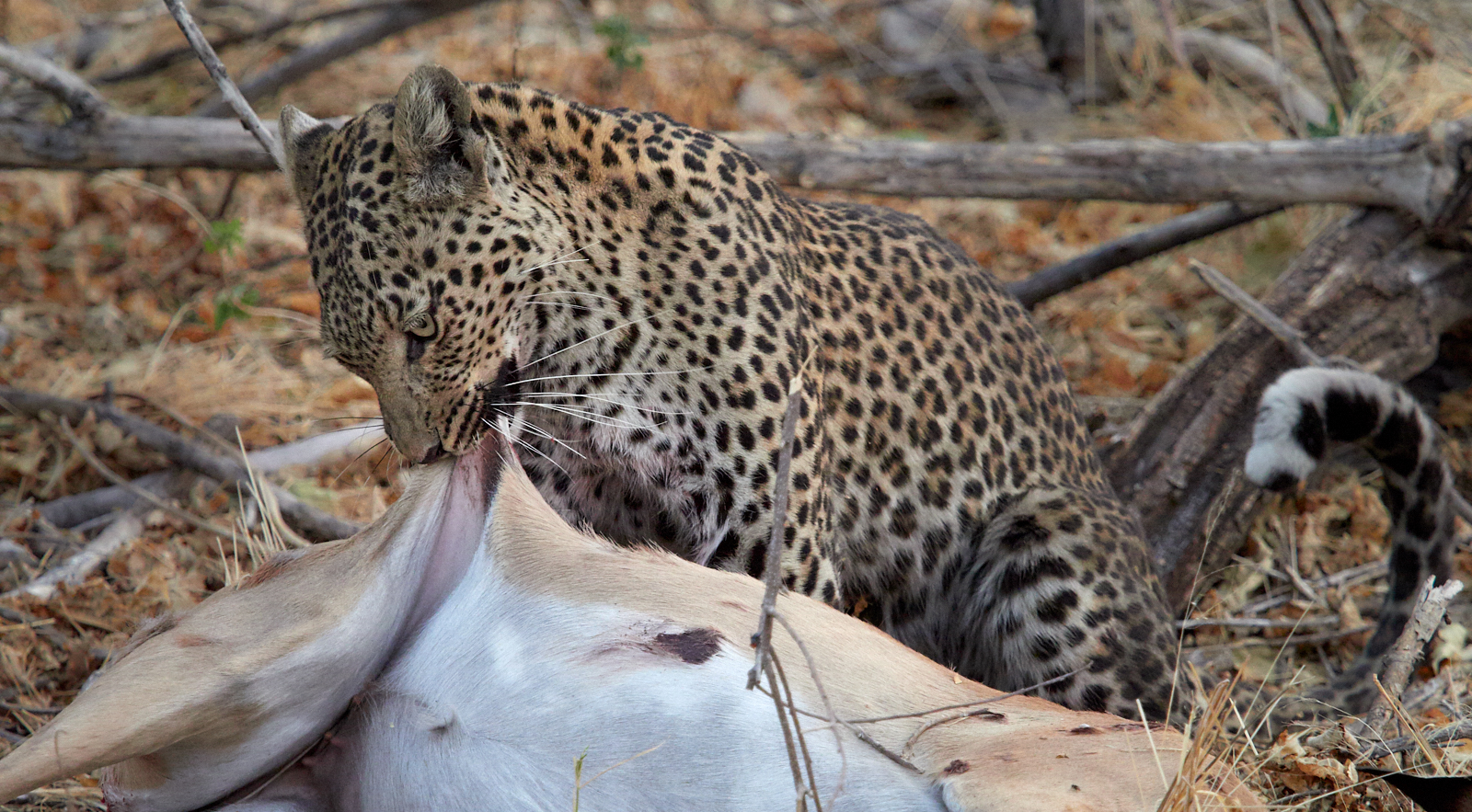

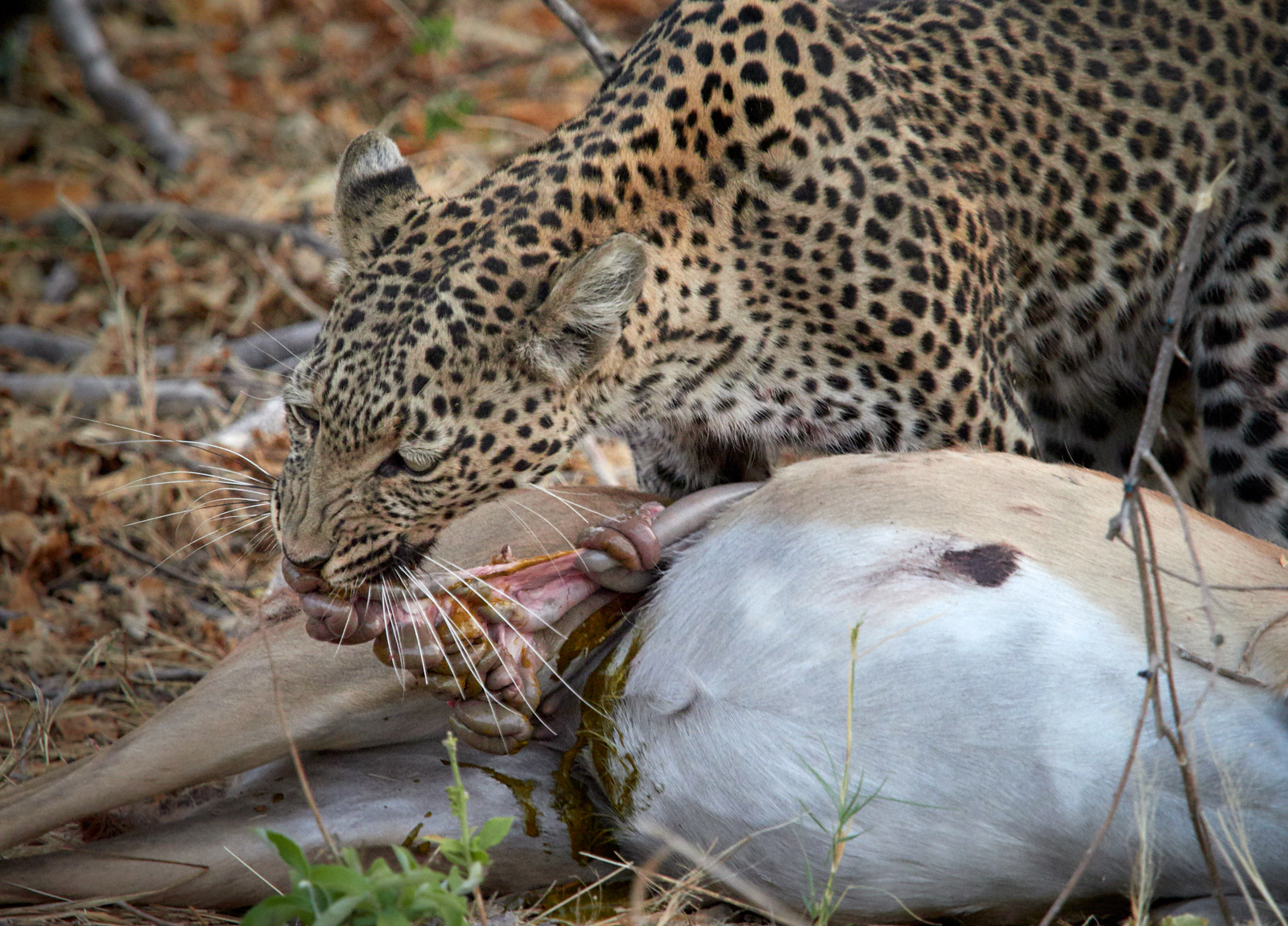


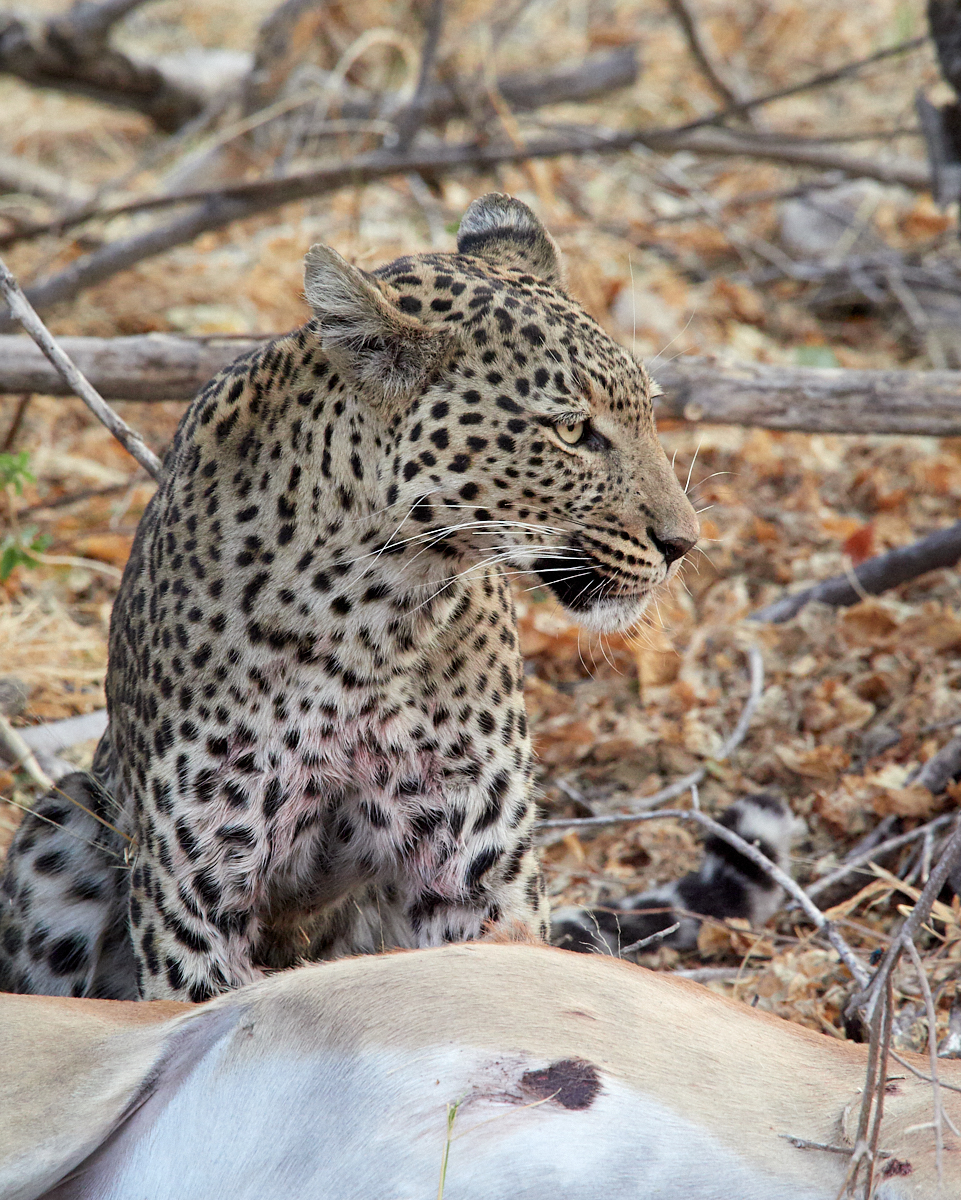
Periodically the leopard paused to listen for approaching hyena…
Listening for hyena
The sun was setting behind the confetti bushes, so we had to leave the kill to drive back to the camp for supper.
Confetti bush sunset
We returned the next day to find the leopardess had recovered sufficiently to drag the carcass in to a low tree, and she had devoured much of the meat.
Impala carcass in the tree
Treed leopard
We became aware we were not alone, and the hyena we had seen the previous evening was lurking patiently near the tree, awaiting any chance of grabbing some meat. Hyena are the main scavengers of leopard kills and have fantastically strong jaws. They can drive leopard off kills on the ground, but they lack the cat’s agile climbing abilities, which is their main adaptation to a solitary predatory life in environments with climbable trees.
Lurking hyena
We headed off for other sightings, but P-man said it would be worth returning the following morning since he anticipated there would still be some meat remaining on the carcass and there might be interesting interactions between cat and scavenger, who he predicted would remain beneath the tree.
This was indeed the case - P-man also demonstrated his uncanny timing abilities by delivering us back to the tree 5’ before an impala leg slipped away from the rest of the carcass and dangled tantalisingly closer to the ground. The hyena struggled to reach it, but then, success, and he beat a retreat with his prize!
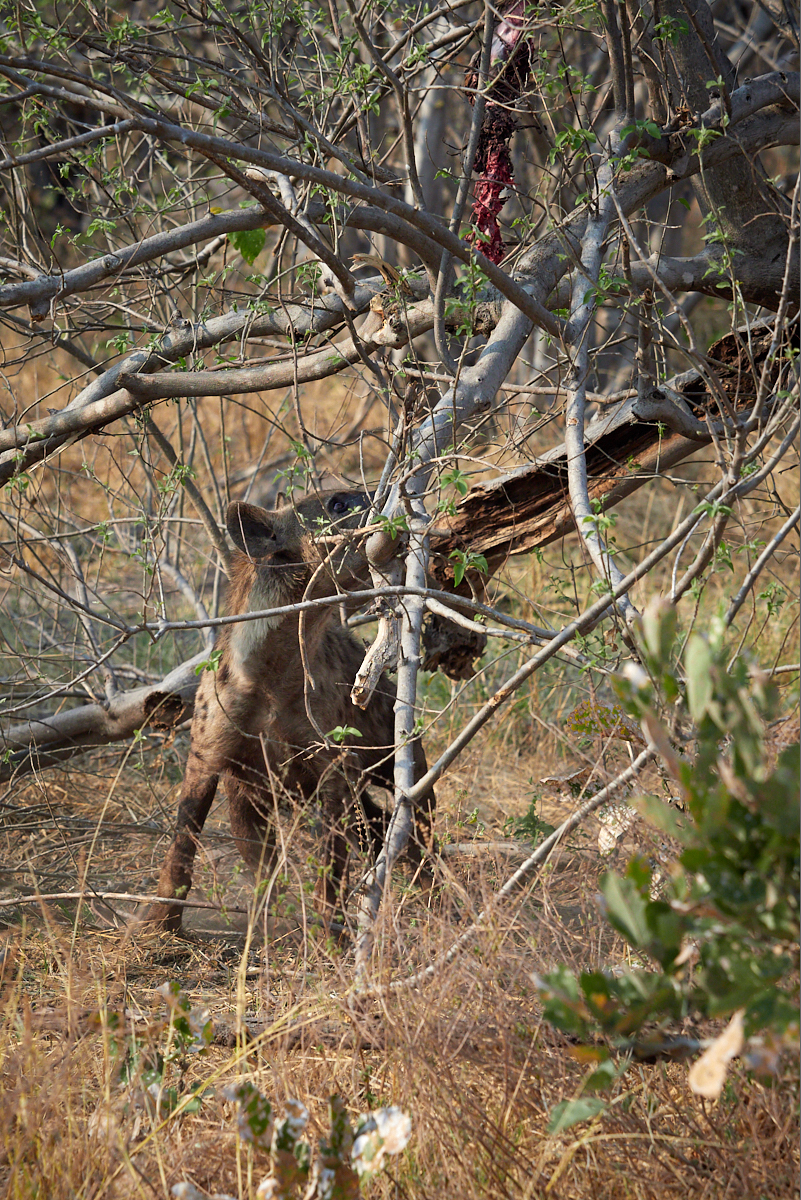
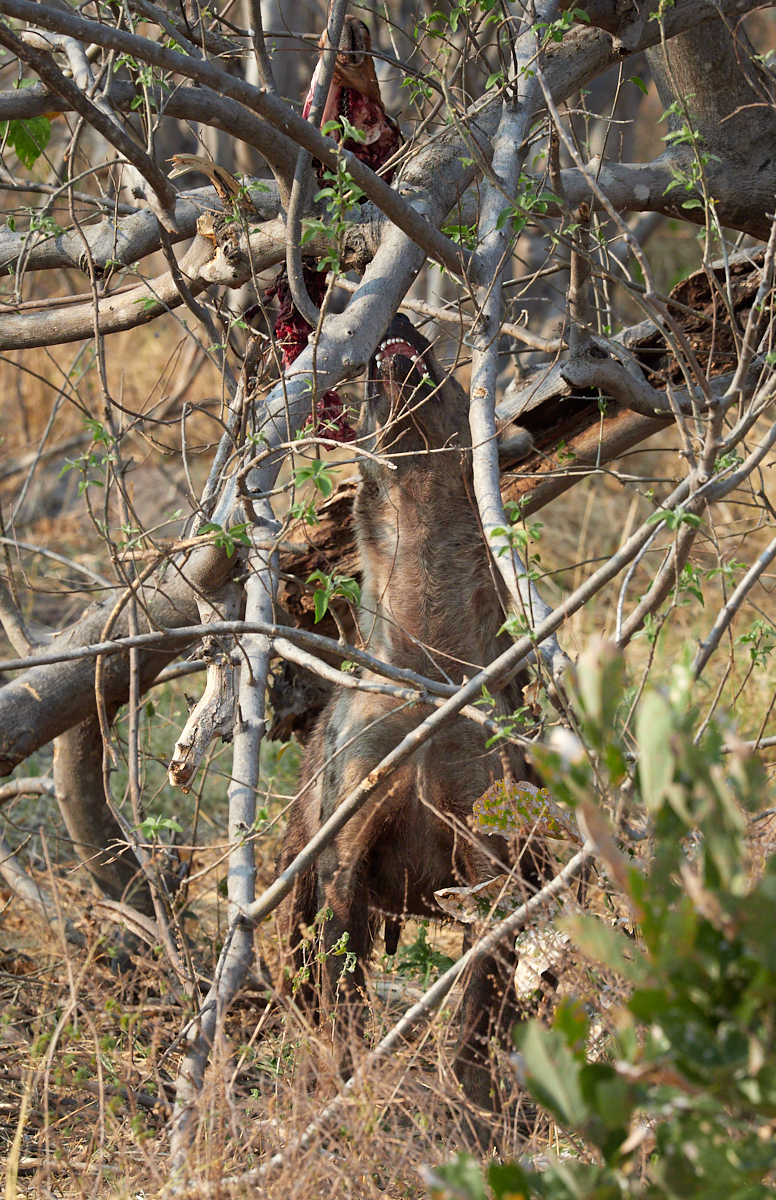
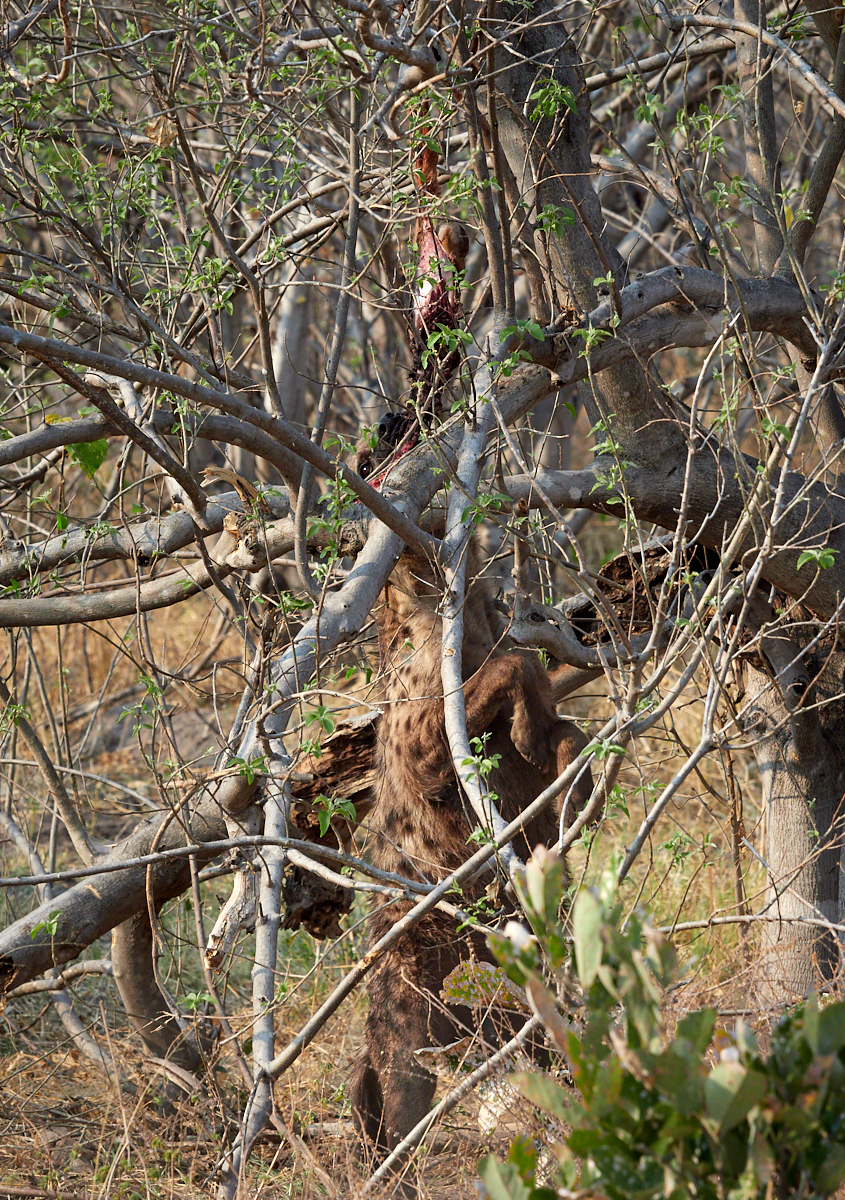
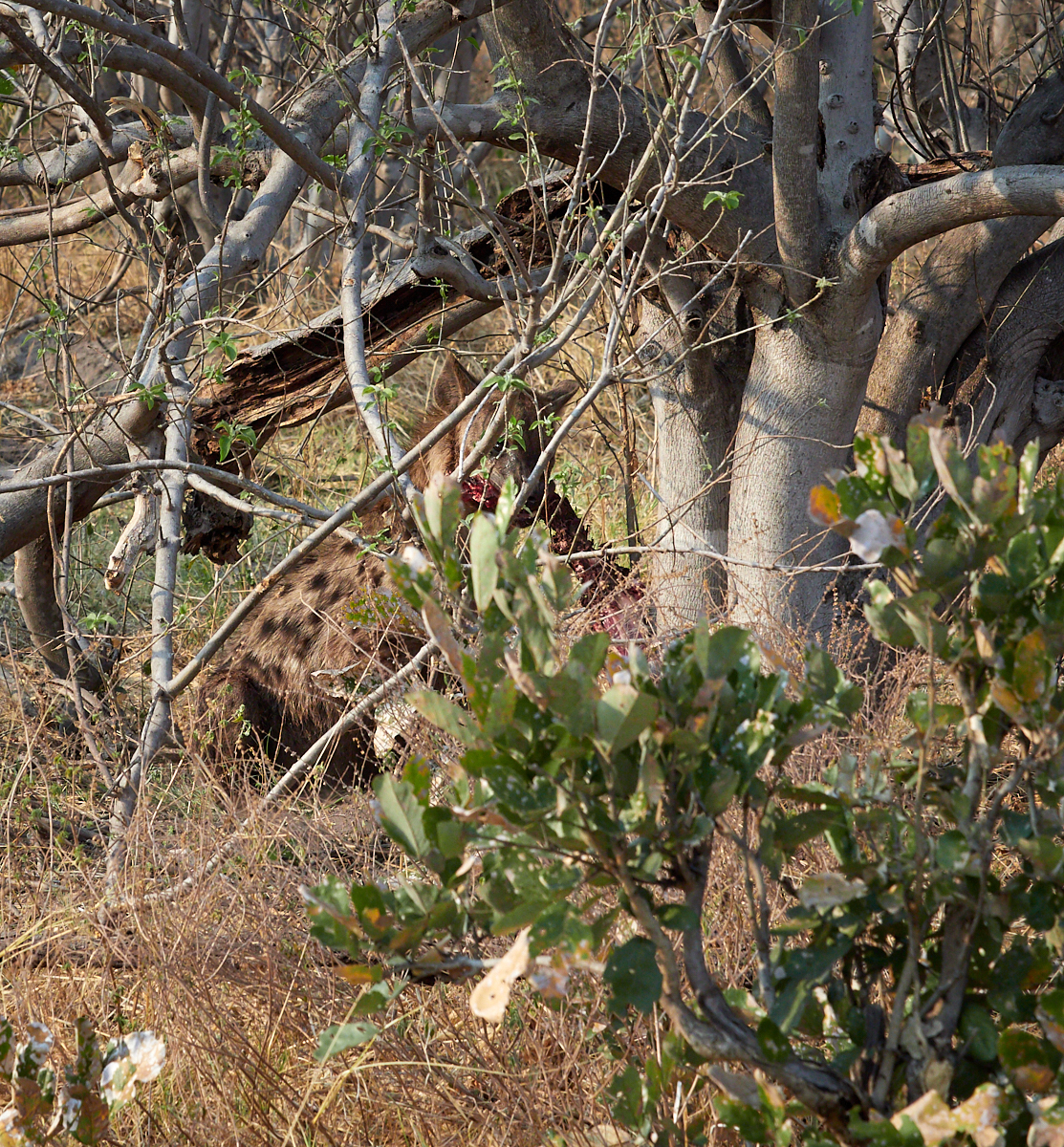
So hyena patience was rewarded, but the leopard carried on munching unconcernedly…












